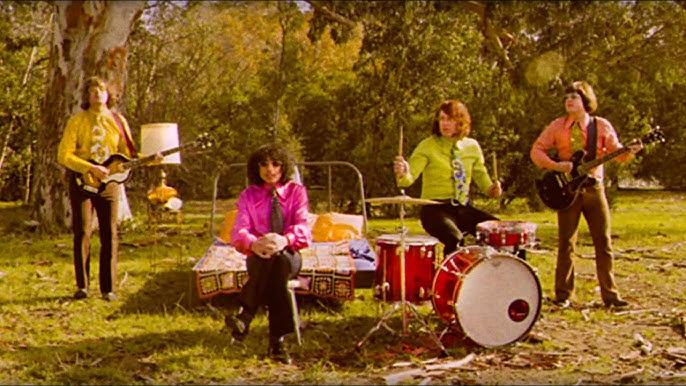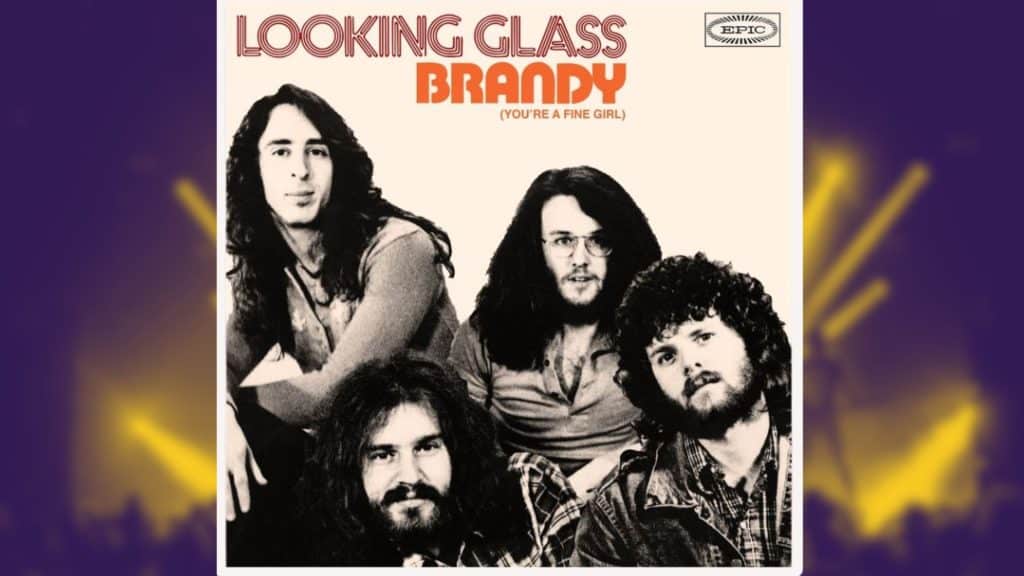Looking Glass, the band behind the 1972 hit “Brandy (You’re a Fine Girl),” was more than just a one-hit wonder. The group’s success resulted from its members’ combined talents.
This blog post will dive into the lives and contributions of the musicians who made up Looking Glass, giving you a better understanding of the people behind the music.
We’ll introduce the founding members Elliot Lurie, Pieter Sweval, and Larry Gonsky and explore their roles in shaping the band’s sound.
Next, we’ll look at the impact of new members like Jeff Grob and how they influenced the group’s evolution. By the end, you’ll have a greater appreciation for the individuals who created the music you love.
Looking Glass’s Formation and Early Years
Looking Glass traces its roots to Rutgers University in New Brunswick, New Jersey, where the band first formed in 1969.
The original lineup consisted of Elliot Lurie, Pieter Sweval, and Larry Gonsky, along with other musicians who were students at the time.
This early incarnation of Looking Glass found success performing at local clubs and fraternities, building a strong following in the area.
However, after graduating from college, the band members went their separate ways, leading to a temporary split.
It wasn’t until later that Lurie and Gonsky decided to give the band another shot, joining forces with Sweval and drummer Jeff Grob, who had been playing together in a group called Tracks. This reformation marked the beginning of the classic Looking Glass lineup that would go on to achieve national recognition.
Their reputation grew as the newly reformed Looking Glass began to play more shows throughout New Jersey and along the East Coast.
The band’s mix of rock, pop, and soul influences, with their tight musicianship and engaging stage presence, helped them stand out from other local acts.
This early success set the stage for Looking Glass to take its music to a wider audience and catch the attention of record labels in the coming years.
Looking Glass: The Classic Lineup

At the heart of Looking Glass’s success was the classic lineup, consisting of four talented musicians whose unique contributions shaped the band’s distinctive sound. Let’s take a closer look at each of these key members:
1. Elliot Lurie
As the lead guitarist and vocalist, Elliot Lurie played a central role in defining Looking Glass’s musical identity.
His songwriting skills were particularly notable, with his composition “Brandy (You’re a Fine Girl)” becoming the band’s biggest hit and signature song.
Lurie’s guitar work and vocals were essential to the Looking Glass sound.
2. Jeff Grob
Drummer Jeff Grob held down the beat for Looking Glass. His solid and steady playing laid the band’s rhythm section foundation, allowing the other members to build upon his grooves.
Grob’s contributions were crucial to the band’s tight and polished performances.
3. Larry Gonsky
On piano and vocals, Larry Gonsky brought a unique flavor to Looking Glass’s music.
His keyboard playing added depth and richness to the band’s arrangements, while his vocal harmonies helped create the group’s lush and memorable sound.
Gonsky’s influences can be heard throughout Looking Glass’s recordings.
4. Pieter Sweval
Bassist and vocalist Pieter Sweval rounded out the classic lineup. His bass lines were a key component of Looking Glass’s sound, providing a solid foundation and working in lockstep with Grob’s drumming.
Sweval’s vocal harmonies were also essential to the band’s signature sound, blending seamlessly with Lurie and Gonsky’s voices.
Musical Breakthrough and Success of Looking Glass
Looking Glass’s journey to stardom began with the recording of their seminal hit, “Brandy (You’re a Fine Girl).”
Elliot Lurie wrote the song’s catchy melody, heartfelt lyrics, and memorable chorus, which struck a chord with listeners.
Released in the summer of 1972, “Brandy” quickly climbed the charts, ultimately reaching the number one spot on the Billboard Hot 100 and cementing Looking Glass’s place in music history.
The success of “Brandy” profoundly impacted the band, personally and professionally.
As the song dominated radio airwaves and the band’s popularity soared, Looking Glass was in high demand for live performances and media appearances.
The group’s dynamic on stage evolved as they played to larger and more enthusiastic crowds, feeding off the energy of their newfound fame.
However, with this success came the challenge of following up on their initial breakthrough.
Looking Glass’s subsequent single, “Jimmy Loves Mary-Anne,” managed to crack the Top 40 but failed to match the overwhelming success of “Brandy.”
Despite their best efforts in the studio and on stage, the band struggled to recapture the magic of their first hit.
As the pressure to deliver another smash hit mounted, tensions within the band grew.
Creative differences and the strain of constant touring took their toll, leading to changes in the group’s lineup and musical direction.
Later Changes and Evolution of Looking Glass
As Looking Glass navigated the challenges of maintaining its success, the band underwent significant membership and changes in musical direction.
One of the most notable shifts occurred in 1974 when Elliot Lurie, the band’s lead guitarist, vocalist, and songwriter, left the group to pursue a solo career.
This departure marked a major turning point for Looking Glass, as Lurie had been a driving force behind their signature sound and biggest hits.
In the wake of Lurie’s exit, the band brought in new members to fill the void. Brendan Harkin joined as a guitarist in early 1974, bringing a fresh perspective to the group’s music.
Later that year, Michael Lee Smith, a talented singer from Georgia, replaced Lurie as the band’s lead vocalist. These personnel changes inevitably influenced the band’s creative direction and overall identity.
As the new lineup continued evolving, Looking Glass rebranded itself as Fallen Angels.
This change signaled a shift in their musical style, moving away from the pop-rock sound that had defined their earlier work and towards a more rock-oriented approach.
The Fallen Angels lineup also saw the departure of keyboardist Larry Gonsky, further altering the band’s sound.
In 1975, the group underwent another transformation, changing its name to Starz and welcoming guitarist Richie Ranno into the fold.
This final iteration of the band showcased a harder-edged, more guitar-driven sound that was far from the pop sensibilities of Looking Glass’s early days.
While these changes allowed the band to explore new musical territories and showcase the talents of different members, they also made it increasingly difficult for the group to maintain a consistent identity and recapture the magic of their initial success as Looking Glass.
Nonetheless, the band’s evolution serves as a testament to its members’ resilience and adaptability in the face of an ever-changing music industry.
Looking Glass’s Legacy and Reunions
Despite the challenges and changes faced by Looking Glass over the years, the band’s music has endured, leaving a lasting impact on the pop-rock genre and inspiring generations of artists.
The enduring popularity of their hit song “Brandy (You’re a Fine Girl)” is a testament to the group’s ability to craft memorable and emotionally resonant music.
Recognizing their legacy, various reunion efforts have been made to bring the band back together.
One notable example was the 1995 “70s Reunion Concert” held at the Theatre at Madison Square Garden, which featured original lead singer Elliot Lurie and other past members of Looking Glass.
The concert, organized by New York radio station WPLJ-FM, also included performances by other iconic 1970s acts, such as Three Dog Night and Stories.
In 2003, Elliot Lurie took steps to revive Looking Glass again, assembling a new lineup of musicians to perform and record under the band’s name.
This reformation helped introduce the group’s music to new listeners and renewed interest in their classic recordings.
While the new iteration of Looking Glass may not have featured all of the original members, it celebrated the band’s legacy and the enduring power of its music.
Looking Glass’s contributions to the pop-rock genre cannot be overstated. Their blend of catchy melodies, heartfelt lyrics, and polished instrumentation set a standard for the era and influenced countless artists in the following decades.
The band’s ability to craft memorable hooks and evocative storytelling through songs like “Brandy” has earned them a place in the annals of music history.
Today, Looking Glass’s music continues to resonate with listeners, both those who experienced their rise to fame firsthand and younger audiences discovering their work for the first time.
As newer generations explore the rich tapestry of 1970s pop and rock, Looking Glass remains a key thread, a reminder of the power of great songwriting and the enduring nature of timeless music.
Conclusion
Looking Glass’s journey is a testament to the power of music and the resilience of the human spirit.
From their humble beginnings at Rutgers University to their meteoric rise with “Brandy (You’re a Fine Girl),” the band’s story is about passion, perseverance, and pursuing a dream.
Though Looking Glass’s faces may have changed over the years, the band’s heart and soul remained constant, as evidenced by the enduring legacy of its music.
As we reflect on the impact of Looking Glass, it’s clear that their contributions to the pop-rock genre will continue to inspire and captivate audiences for generations to come.
So, the next time you hear “Brandy” on the radio, take a moment to appreciate the incredible talent and dedication of the musicians who made it all possible.





















